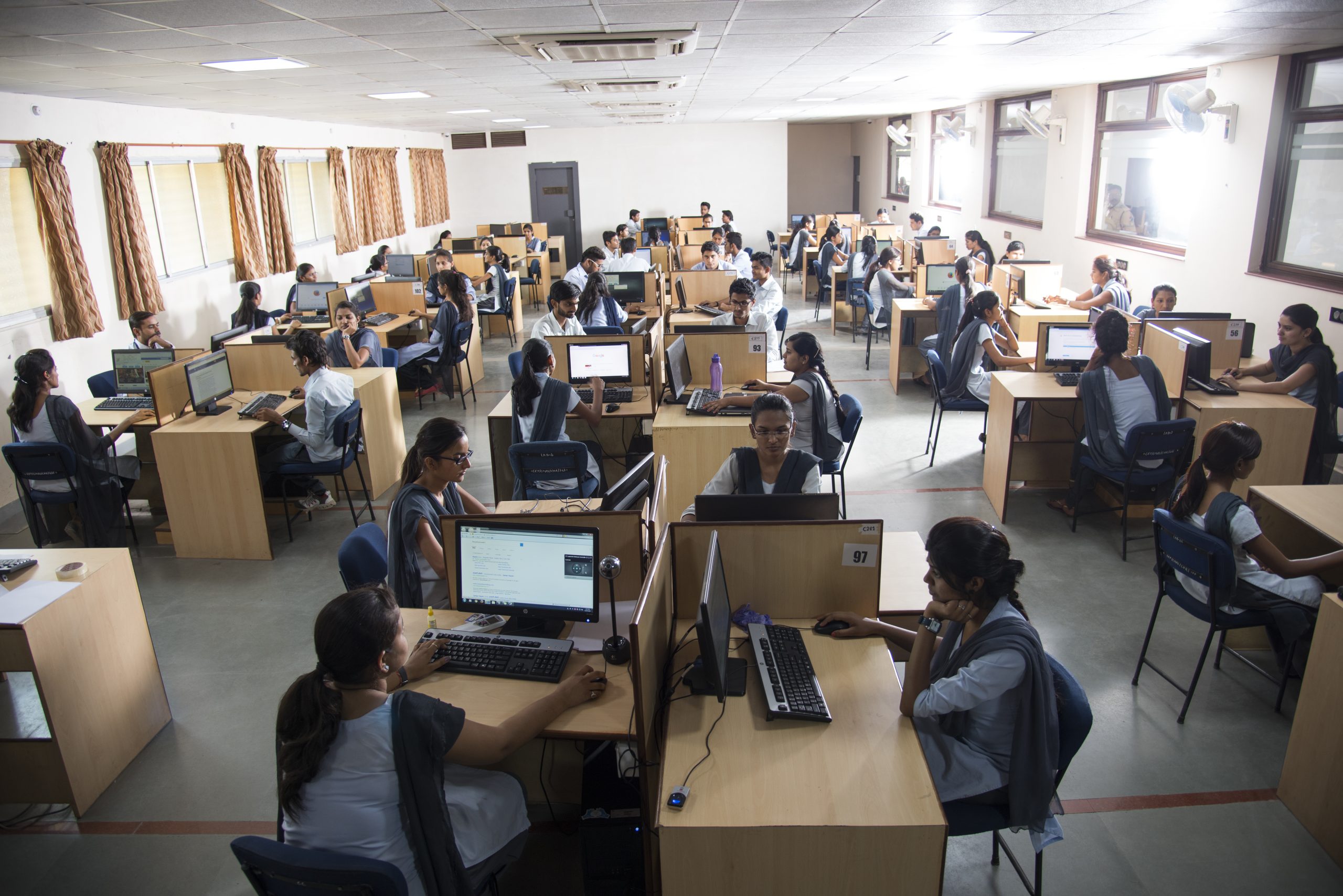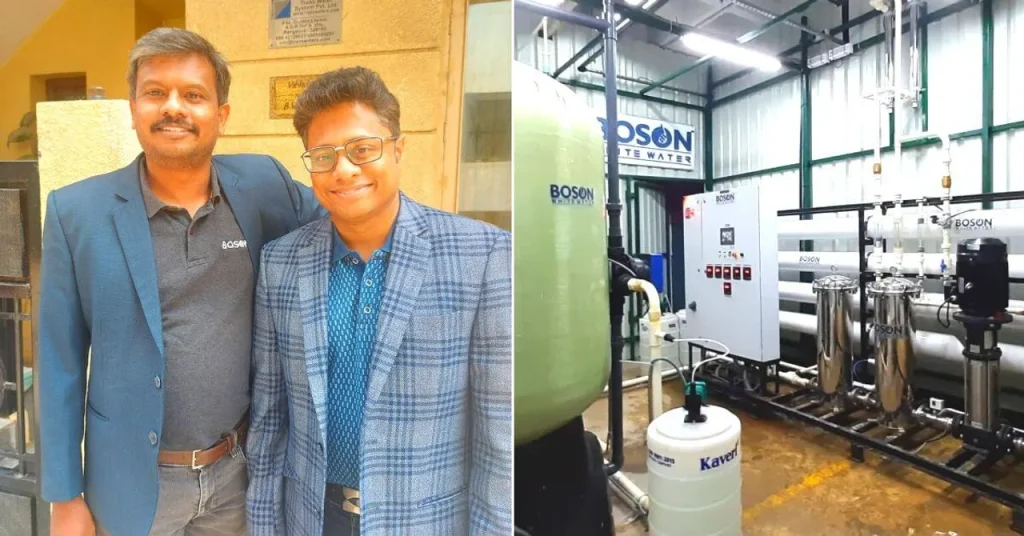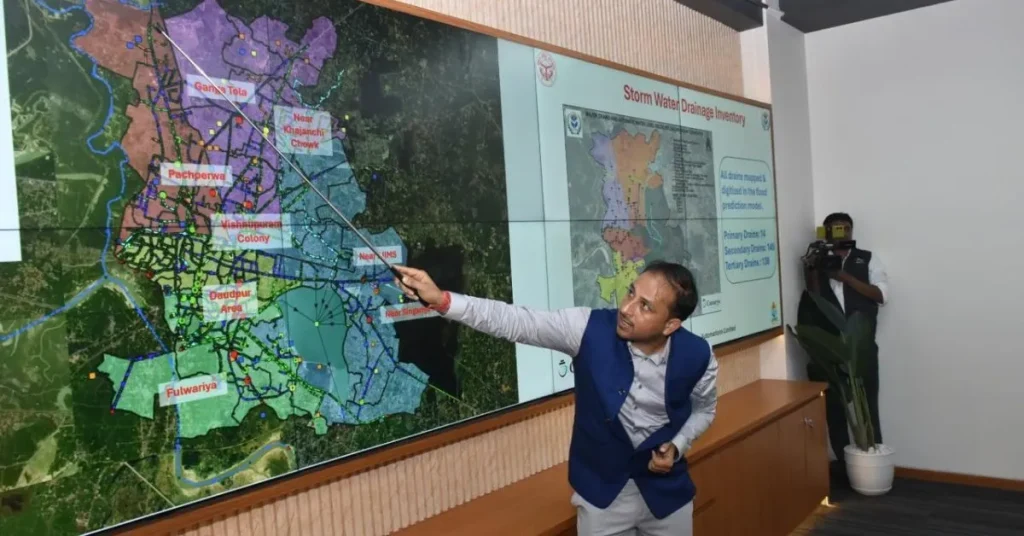
AI in the Classroom: How Pimpri Chinchwad is Monitoring Learning Through Smart Analytics
In a pioneering move to improve classroom engagement and administrative insight, the Pimpri Chinchwad Municipal Corporation (PCMC) has introduced AI-powered analytics in its municipal e-classrooms. With automated monitoring of student attentiveness, emotion, and teacher engagement, this pilot project seeks to overcome resource gaps in public education while laying the groundwork for data-driven pedagogical reform in India’s urban schools.
Updated on: 16 July 2025

Sector

Solution
Technology

State of Origin
Impact Metrics
18 classrooms
across three schools benefitted from the pilot program.
Improved engagement
and teacher accountability.
The Problem: Limited Visibility into Learning Dynamics
Public schools often struggle with large class sizes, suboptimal teacher-student ratios, and insufficient tools to track engagement in real time. In Pimpri Chinchwad, classroom activities were being monitored only by teachers, leading to inconsistencies in gauging student attentiveness and participation. Data on teacher efficiency, time spent on instruction, and resource use were not being captured systematically. These challenges created significant blind spots in school governance and curriculum delivery.
AI as a Solution for Holistic Monitoring
To address these gaps, PCMC piloted an artificial intelligence-based education analytics system across 18 classrooms in 3 municipal schools. The solution deployed AI software to analyze real-time video feeds from two classroom-installed cameras—one focused on the teacher’s board and another on students’ desks.
The system monitored various indicators of student behavior, such as attention span, emotion, movement, and punctuality. It also tracked teacher performance, including active teaching time, interaction with students, and use of learning tools. By generating behavior-based dashboards, it enabled headmasters and supervisors to intervene when needed and promote consistent instructional quality across schools.
Policy Relevance and National Alignment
This initiative aligns with key objectives of the National Education Policy (NEP) 2020, which emphasizes the use of technology to improve learning outcomes, enable teacher training, and support school leadership. It also complements Digital India by promoting smart classrooms and Viksit Bharat @2047 by fostering transparent, accountable, and adaptive public services.
Moreover, by proposing a decision support system (DSS) based on behavioral analytics, the project reflects a broader push towards evidence-based education management and the personalization of student learning paths in resource-constrained environments.
Impact on Schools and Stakeholders
Despite its limited scale, the pilot has yielded promising outcomes:
- Student engagement metrics (attention and emotional data) were successfully captured, providing baseline insights for future interventions.
- Teacher behavior became more focused due to camera-based accountability, resulting in improved classroom discipline and more structured interactions with students.
- Supervisory capacity was enhanced, allowing school heads to give targeted feedback and initiate timely corrective actions.
The initiative also created awareness among stakeholders—including the education department and civic administrators—about the potential of AI to fill systemic monitoring gaps that manual methods cannot address.
Challenges and Key Learnings
Implementation faced delays due to the COVID-19 pandemic and its associated restrictions, such as students and teachers wearing masks, which inhibited the facial recognition component. Other hurdles included poor internet infrastructure and the lag in data upload to the central server, which limited real-time analytics.
However, valuable learnings emerged:
- Real-time image processing may be replaced with scheduled frame sampling to reduce server load.
- Future iterations could include edge computing or local servers to decentralize data storage and analysis.
- Infrastructure readiness—especially high-speed connectivity—must precede digital education reforms for optimal impact.
Laying the Foundations for Smarter Schools
Pimpri Chinchwad’s AI-driven classroom analytics system represents a frontier innovation in public education. By integrating artificial intelligence into municipal schools, the city has initiated a shift from anecdotal teaching reviews to measurable, behavior-based insights. While the pilot remains small in scale, its vision of enabling data-informed decision-making for both administrators and educators is scalable and replicable across urban India.
As the education sector looks toward hybrid and technology-integrated learning models, this initiative offers a robust example of how even local governments can harness AI to enhance accountability, improve learning environments, and build smarter schools for the future.
Share Your Story Today, Shape Viksit Bharat Tomorrow
Got an idea, innovation, or experience that's making a difference? Share your story now and ignite India's transformation because your voice can drive the future forward!
BUILD YOUR OWN
BUILD YOUR OWN
How can I implement this innovation effectively?
How is this innovation being adopted around the world?
Where else could this innovation make an impact?
Who has seen real results from using this innovation?
What insights do experts share about this innovation?
What policies support or influence this innovation?
How could this innovation evolve in the future?
Is this innovation accessible and inclusive for everyone?
How can I contribute to or participate in this innovation?
What resources can help me explore this innovation further?
If you would like to know more about this innovation, fill this form to contact the innovator.
Handpicked stories tailored just for you
Explore stories that inspire, inform, and ignite new ideas across tech, innovation, and real-world impact


AI-Enabled Water Recovery at Scale: 65 Crore Litres Saved, 55 Lakh Tankers Eliminated
Boson Whitewater uses an AI- and IoT-enabled 11-stage filtration system to convert sewage-treated water into potable-quality supply for urban India....
Read More

